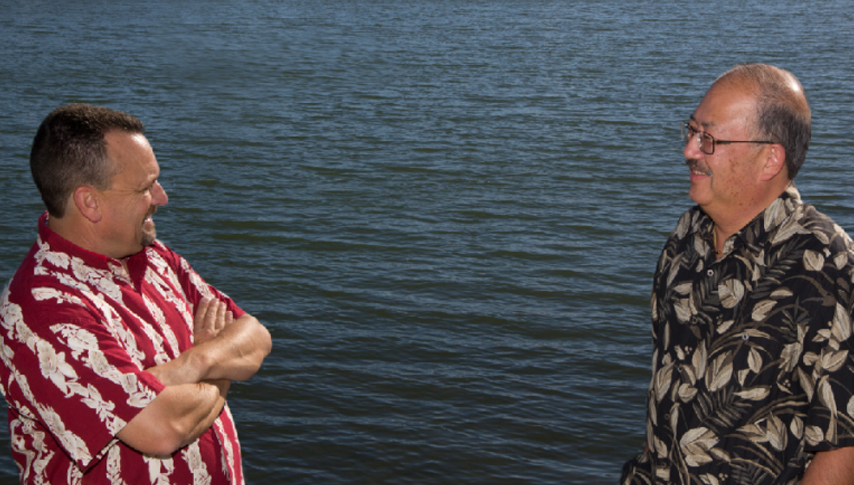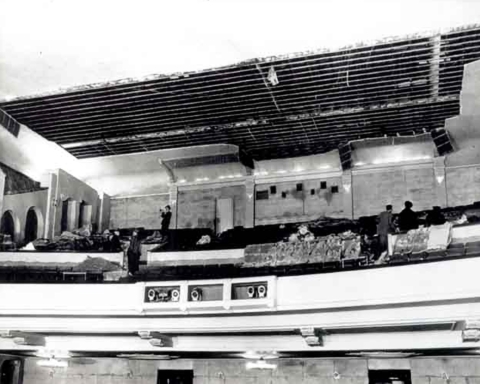It is often the case that the issues addressed in a political campaign disappear as soon as the ballots are counted and the subsequent term in office is spent dealing with matters that never came up.
What may be most critical, then, it could be argued, are the inherent qualities of the people elected – who they are on the most fundamental level, how they make decisions, how they learn about new issues, how they interact with others to win support and whether they can embrace new ideas and look beyond the positions they took in the campaign.
Good political leaders bring to office a determination to achieve the specific agenda they set during the campaign.
Great political leaders grow beyond their initial understanding of the job and expand their own knowledge and agendas to address not only current problems, but future needs.
This sensibility of how to lead and how to anticipate what comes next is very much on the minds of two incumbent members of the Redwood City Council who have opted to bow out of the process after nine years – Jeff Gee and John Seybert.
They certainly understand the current problems – costly and insufficient housing, congestion and traffic, development and a municipal fiscal crisis.
But their concern is what comes next and how can the city gain control over a future that is likely to be full of unexpected issues and unintended consequences.
So, when the two outgoing incumbents met with Climate over coffee in San Carlos to discuss the current campaign and the state of the city they love, their focus was not on the current roster of seven candidates seeking three seats on the City Council.
They were focused on the voters, offering advice for how they should be thinking about the election as they begin to decide who will lead the city into the next decade and beyond.
The best thing voters can do, according to Gee and Seybert, is to vote for those candidates who can look beyond the moment, who have a vision for what Redwood City should be like 25 years from now.
And look, they say, for those who can build coalitions among council colleagues, who can best work with a diverse group of local and regional leaders to address issues that are not on anyone’s agenda yet and who can reach beyond a momentary disagreement to sustain civility in local politics.
“Redwood City has always been known as a council that is looking ahead,” Gee said. “What is their vision for the city, not today, but 10, 20, 30 years from now?”
“What will it take to balance the budget in the next downturn, which will come?” said Seybert. “What tough decisions are you prepared to make?”
As an example of unintended consequences, they cite the decisions – or non-decisions — of prior councils that have contributed to today’s costly housing crisis.
“Decisions that were made in the mid-1990s are why we don’t have enough housing today,” Seybert said. “No one was building any housing.”
In 2009, said Gee, the city was the number one developer of housing, demonstrating how different the atmosphere was then, and how decisions made then could have alleviated today’s housing crisis.
Gee and Seybert were elected together in 2009 – campaigned together and have remained close friends and council allies. Each chose separately not to seek a third term on the council, Gee some weeks after he actually kicked off his campaign.
The result is a wide-open race for three council seats among a field of seven candidates with uncommonly extensive and wide-ranging experience: Incumbent Vice Mayor Diane Howard, businessman Ernie Schmidt, community organizer Diana Reddy, businesswoman/mother Giselle Hale, small business owner Christina Umhofer, university community relations representative Jason Galisatus and certified public accountant Rick Hunter.
For both Gee and Seybert, a difficult decision was influenced by a political atmosphere dominated by tweets and Facebook posts, accusations and suspicions, hints and allegations.
“The personal attacks, the drive-bys, having to put cameras on the outside of your house – it’s not worth it,” Gee said.
Even as he announced his candidacy, hanging over his campaign was a still-unresolved complaint against Gee filed anonymously with the Fair Political Practices Commission alleging he had failed to recuse himself from voting on some Stanford-related projects in Redwood City that were awarded to his employer, Swinerton. The complaint alleged Gee was financially benefiting from the projects. Gee has steadfastly asserted that he behaved appropriately and that the allegations are untrue.
Nonetheless, questions of his integrity frequently were raised on local Facebook pages and sweeping assertions were made, most of them offered without a factual foundation.
For Gee, it meant a campaign with this issue ever-present and with a cadre of local residents who would have been determined to make him the central focus of the campaign.
Gee said he opted not to run because of increased responsibilities at his job, a leadership position at Swinerton that requires extensive overseas travel.
While he insists he did not shrink from the fight he was facing, it was clear that he was expecting an entirely unpleasant experience.
“Not just this race, but politics in general has been a very toxic environment,” said Seybert. “The cost of leadership is a lot higher now. It got beyond what I was willing to pay. Most people won’t run because most people can’t stomach it.”
Both of them remain alarmed at the way accusers hide behind social media.
“Some people who attack you in social media, when they see you in person, they act like it never happened,” said Seybert. He called it “digital cowardice.”
The ability to succeed in such an environment will require council members with a willingness to withstand the slings and arrows that come with the job, and look beyond the momentary passions of a particular issue.
“Leadership isn’t a popularity contest, but an election is,” said Gee. “There will be decisions a councilmember has to make that are not popular decisions.”
“What tough decisions are you prepared to make?” said Seybert. “I look for people who will make the decisions, whether they agree with me or not. … I don’t like some of the effects of the rapid growth that has occurred. They make me uncomfortable. But I’m not doing this to be comfortable today. You don’t save for college when your kids are 2 because it’s comfortable.”
Gee and Seybert have endorsed Hale and Galisatus. Seybert also has endorsed Howard. Gee said no one else has asked for his endorsement.
“I endorsed people who have what it takes to make these hard decisions,” Seybert said.
Gee urged voters to look among the candidates for those “with the ability to learn and represent the young and the demographics who are not represented. … What do they envision Redwood City to be in 20 or 30 years? What happens when autonomous vehicles hit the road.”
He called it being able to “look around the corner” to see what might be coming.
Ultimately, Seybert and Gee said, there are some essential qualities a council member must possess.
Gee called them basic skills: Leadership, values, guiding principles, vision, working well with others, knowledge and the ability to learn, a breadth of capabilities.
He said voters should be looking for council members who have relevant work experience in day-to-day finance, in borrowing and financing, in asset management, in recruiting and retaining good staff.
Gee and Seybert said that to be effective, a council member must be able to do certain things.
Can the person win over a majority of the council – can he or she get four votes? That implies an ability to work with others and, ultimately, to compromise for the greater good.
Will the candidate represent Redwood City effectively on the many critical regional boards and commissions, winning the respect of colleagues and serving as a useful advocate for the city’s interests?
Gee currently chairs the SamTrans Board of Directors and represents San Mateo County on the Caltrain Board of Directors, positions he obtained by a vote of his peers at every city council in the county.
These regional bodies make decisions that are critical for the region and, therefore, for Redwood City. A council member cannot assume that the issues facing Redwood City are unique and isolated, they said.
“The drawbridge doesn’t work,” Gee said. “We have to work together.”
And will the council member look beyond a council chamber full of angry residents to see the bigger issues that could face the city in the future?
“Can unpopular decisions be made and lead the city?” Gee asked.
“Can they do their homework?” Gee asked. “Will they come to meetings prepared? Do they believe in being a diverse and welcoming city? If so, what have they done? What nonprofits do they support and participate in? What and where and how regularly do they volunteer? Will they represent all parts of Redwood City or just a portion?”
“It’s not about who shows up the city council meetings,” Seybert said, describing the meetings as the “tip of the iceberg” when it comes to council duties.
“Paying attention to social media is like running to the front of a crowd and yelling, ‘Follow me,’” Seybert said.






